ABANO TERME AND MONTEGROTTO TERME: THE SPAS OF VENICE
A CROSSROADS BETWEEN SOME OF THE MOST BEAUTIFUL CITIES IN NORTHERN ITALY
The Euganean Spas enjoy a unique, privileged location, a crossroads between some of the most beautiful cities in Northern Italy.
 VENICE: a unique city, magically suspended on the water.
VENICE: a unique city, magically suspended on the water.
PADUA: "the city of the Saint" with its XIV century Basilica of St. Anthony, boasts a medieval historic center with a wealth of piazzas including, the XVIII century Prato della Valle and the superb Scrovegni Chapel, that houses noteworthy frescoes by Giotto.
VERONA: the symbol of love and the setting for Shakespeare's Romeo and Juliet, reveals the signs of Roman grandeur in the Arena, which hosts one of the most prestigious international opera festivals.
VICENZA: at the foot of the magnificent Berici Hills, joins grandiose Palladian architecture with Gothic grace.
FERRARA: the Renaissance art center with the refined Palazzo dei Diamanti.
MANTUA: an accommodating gem of a city, seat of the historic Gonzaga family.
ABANO TERME

Today Abano Terme is one of the most famous spa resorts in Europe.
Its large scale accommodation capacity, spread across many hotels all equipped to offer special spa treatment services, holds the record of being the largest spa town in the world.
The city centre has a large pedestrian precinct, filled with old and modern buildings, large hotels with
well-tended gardens, shops, bars and restaurants, and the historical and monumental sights also include one of the most important testimonials of the Aponus spa, Montirone Hill.
NOT TO BE MISSED
 Montirone Hill: this small hill, once rich in naturally flowing spa springs, was particularly dear to the ancient Patavini, who in Roman times surrounded it with villas and spa stations.
Montirone Hill: this small hill, once rich in naturally flowing spa springs, was particularly dear to the ancient Patavini, who in Roman times surrounded it with villas and spa stations.
The entrance to the old spring, where until the second half of the 1800s the water still flowed spontaneously at a temperature of 80°C, is marked by an early 19th century Corinthian colonnade and a mighty Doric column crowned by a chalice wrapped in the coils of a snake, designed by Giuseppe Jappelli in 1825 for the visit of Emperor Franz I of Austria.
The two buildings either side of the entrance house the civic Montirone Art Gallery, with its collection of 15th - 20th century paintings, drawings and engravings, and the municipal Modern Art Gallery, which hosts temporary exhibitions. Opposite Montirone there is a small oratory designed by Domenico Cerato in 1780, which today is used as an exhibition centre.
Kursaal public gardens: amongst the greenery of the gardens, right in the middle of the pedestrian area, we can find the statue of Pietro D'Abano, one of the most famous sons of Aponus. Another decorative element of this garden is the Harlequin fountain, by Amleto Sartori, artist of international fame, to whom also the Mask Museum, located in Villa Savioli, is dedicated.

Grand Hotel Orologio, one of the emblems of the history of Abano, this beautiful building was constructed in the 17th century by the noble family Dondi dall'Orologio, and was extended in the 19th century with the addition of its neoclassical façade (1825), by Giuseppe Jappelli, who also restored the large gardens surrounding the hotel.
Opposite the Grand Hotel Orologio is the Hotel Trieste & Victoria, another building of particular historical value. This was in fact the headquarters of the Italian Supreme Command during the First World War (1918), and General Armando Diaz often stayed here in an apartment on the first floor.
Viale delle Terme: wide, tree-lined avenue, the real dynamic heart of the town, with its shops, hotels, bars and restaurants. It includes two sites of great interest: the recent Piazza del Sole e della Pace, also known as Piazza della Meridiana, and the S. Lorenzo Cathedral. The polychrome marble sundial is one of the largest of its kind in Europe (3000 m2) and is certainly unique. Designed by Salvador Condè and with the support of the architect Giulio Genta and the gnomonist Giovanni Paltrinieri, it was completed in late 1996, and constitutes a work of the highest scientific, astronomic and educational value.
The S. Lorenzo Cathedral is the main religious building in the town centre. It was founded in the second half of the 10th century, but its current condition dates back to the 18th century, and is the work of the architect Domenico Cerato. Inside we can find 16th century sculptures by Tommaso Allio, the Flagellation on the upper altar by Bartolomeo Litterini (1712) and a Via Crucis attributed to Carlo Henrici. The lovely bell tower dates back to 1314, with its base from the 10th century.
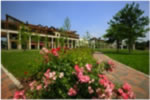
Parco Urbano Termale:
a jewel of modern architecture, designed by one of the most famous architects and architecture historians, Paolo Portoghesi. This large complex, which blends harmoniously in with the buildings and architecture of the spa town, has been conceived as a single, enormous, continuous lawn, criss-crossed by paved walkways and cycle paths and rich in plants and trees along the main avenue. Buildings line up along its sides, all prestigious residences, shops and offices.
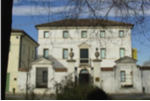
"Amleto e Donato Sartori" International Mask Museum:
the only one of its kind in the world, housing the prestigious works of Amleto Sartori and his son Donato, internationally renowned artists, creators of masks for the "Commedia dell'Arte" and theatre generally. Villa Savioli, built in the 17th century and extended in the following centuries, houses the extraordinary Amleto e Donato Sartori International Mask Museum.
VILLAS AND PARKS
Beautiful noble villas, built mainly between the 16th and 18th centuries, enrich both the town centre and the
surrounding green hills.
Villa Bassi Rathgeb, built in the 16th century and restored in the 1700s, belonged to the noble family Dondi dell'Orologio. Inside the frescoes are by Antonio Buttafuoco.
In the 19th century many famous people stayed here, including Eugenio Beauharnais, Napoleon's stepson, and Viceroy to the Kingdom of Italy. Since 1979 the villa and annexed gardens have belonged to the Municipality of Abano Terme, and have been transformed into a prestigious centre for cultural and sporting events.
Villa Rigoni Savioli (ex Malipiero) is a beautiful Palladian villa built in the 16th century. The façade has four semi-columns surmounted by a triangular tympanum. A staircase decorated with statues leads directly to the first floor. Inside (not open to the public) the lounge is decorated with precious frescoes by GiovanBattista Zelotti, friend and apprentice of Paolo Veronese.
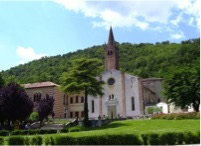 At Monteortone, just outside Abano Terme, we can find the lovely sanctuary dedicated to the "Madonna della Salute" (Madonna of Health).
At Monteortone, just outside Abano Terme, we can find the lovely sanctuary dedicated to the "Madonna della Salute" (Madonna of Health).
The church was built in the 15th century at the place where, in 1428, a soldier named Pietro Falco was miraculously cured of the plague when he found a wooden image of the Virgin in a small cave and then bathed in the waters of a fountain that flowed at the foot of Monteortone Hill.
The church, in the form of a Latin cross with an apsidal nave and two aisles and a bell tower dating back to the 15th century still houses the miraculous image of the Madonna, and each year is visited by many pilgrims. Inside, the church is decorated with many paintings from the 15th century, including frescoes of saints, prophets and kings in the leftnave, and some frescoes by Jacopo da Montagnana in the Chapel of the Crucifix and on the walls of both aisles, beautiful marble bas-reliefs in the presbytery and the tombs of the monk Simone da Camerino, founder of the annexed Agostinian monastery, and other monks as well as the tomb of the noblewoman Maddalena Cardini Capodivacca (1491).
 The entrance portal in Istrian stone is also noteworthy, the work of Matteo and Tommaso Allio (1667). Next to the church is the old Agostinian convent, which is now a Salesian institute, with its large Renaissance cloisters. Another important religious centre is the Benedictine Monastery of S. Daniele, nestling on the mountain of the same name. This construction dates back to 1075, built by the noble da Montagnon family in honour of the Paduan martyr Daniele. In 1461 it was home to the canons of S. Salvatore, and from 1772 until the mid 1900s it was the private residence of the Bonomi- Todeschini family. Today it is home to the enclosed order of Benedictine nuns, whose original nucleus came from Rijeka in 1948. Within the complex, the church, built in 1711 by Francesco Muttoni, a panoramic loggia and some rooms on the ground floor are open to the public.
The entrance portal in Istrian stone is also noteworthy, the work of Matteo and Tommaso Allio (1667). Next to the church is the old Agostinian convent, which is now a Salesian institute, with its large Renaissance cloisters. Another important religious centre is the Benedictine Monastery of S. Daniele, nestling on the mountain of the same name. This construction dates back to 1075, built by the noble da Montagnon family in honour of the Paduan martyr Daniele. In 1461 it was home to the canons of S. Salvatore, and from 1772 until the mid 1900s it was the private residence of the Bonomi- Todeschini family. Today it is home to the enclosed order of Benedictine nuns, whose original nucleus came from Rijeka in 1948. Within the complex, the church, built in 1711 by Francesco Muttoni, a panoramic loggia and some rooms on the ground floor are open to the public.
MONTEGROTTO TERME
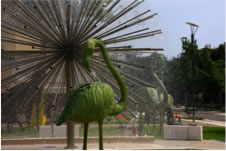 Together with Abano, Montegrotto Terme constitutes the main centre of the Euganean Spa. According to archaeological sources, the ancient lakeside sanctuary, frequented by the people of Veneto between the 8th and 3rd centuries BC stood exactly here, in the area between Monte Castello and Colle Montagnone. The lake covered around 2 square kilometres and was round in shape, originating from a spa water spring. The sulphurous exhalations, considered to be divine, came naturally and powerfully from the centre of the earth and were revered with votive offerings, including vases, chalices, cups and glasses.
Together with Abano, Montegrotto Terme constitutes the main centre of the Euganean Spa. According to archaeological sources, the ancient lakeside sanctuary, frequented by the people of Veneto between the 8th and 3rd centuries BC stood exactly here, in the area between Monte Castello and Colle Montagnone. The lake covered around 2 square kilometres and was round in shape, originating from a spa water spring. The sulphurous exhalations, considered to be divine, came naturally and powerfully from the centre of the earth and were revered with votive offerings, including vases, chalices, cups and glasses.
From the 2nd century BC onwards, in Roman times, the lake lost its sacred function and Montegrotto became a large, famous spa location. The current name of this place is in fact Roman, Mons Aegrotorum, meaning the mountain of the sick. Ancient Latin authors described the Euganean spa waters as prodigious and, as Claudian writes, "without damage, they renew lost vigour and calm the sicknesses of the suffering, who return to good health". The origin of these therapeutic properties was attributed to the presence of Aponus, the god protector of the springs. Still in Roman times, in addition to their curative properties the waters were also attributed with special oracular powers. According to literary sources, oracle of Gerion was consulted in the ancient S. Pietro Montagnon, today known as Montegrotto.
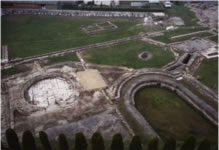
In the archaeological area in the centre of Montegrotto Terme the foundations of some buildings dating back to the Julius-Claudius period can be seen, and these represent just a small amount of the rich imperial spa town, which was certainly one of the most representative of the "X Regio Venetia et Istria". Among the findings, some baths, one of which has marble flooring, spa water pipes, the remains of an aqueduct and the foundations of a range of buildings.
With the fall of the Western Roman Empire, a long period of darkness and silence reigned, and the Spas suffered from an economic and urban slump.
In medieval times the Spas were still in use, but it was only from the 15th century, with the arrival of the nobility of the Serenissima that they were restored to their ancient splendour, frequented for both therapy and pastime.
In the 18th century the first organic scientific studies were carried out on the composition and provenance of the waters, and in modern times the use of the waters and spa mud for therapeutic purposes led to the development of the Euganean Spas, which are now among the most famous and loved destinations of spa tourism in Europe.
NOT TO BE MISSED
 Villa Draghi: set against the splendid backdrop of a park measuring 316,000 m2, this beautiful 19th century villa lies on a small hill half way up Mount Alto. It is a unique example of eclectic architecture, close to the Venetian and oriental styles with typical medieval elements, and this building, which has been uninhabited for a long time and is in a poor state of abandon, has unfortunately been stripped of its most important architectural furnishings, of which today only some rare photos remain. The villa still conserves its crowning Ghibelline battlements, which give it the appearance of a castle. A nature trail, called the "Villa Draghi and Mount Ceva Pathway", departs from outside the villa. This is one of the main hill walks in the Regional Park of the Euganean Hills. Approximately 10 km long, it offers splendid view of one of the most rich and varied hillside environments, With chestnut, acacia and oak woods, vast meadows, Mediterranean maquis, vineyards, and rocky sections with their typical rocky vegetation.
Villa Draghi: set against the splendid backdrop of a park measuring 316,000 m2, this beautiful 19th century villa lies on a small hill half way up Mount Alto. It is a unique example of eclectic architecture, close to the Venetian and oriental styles with typical medieval elements, and this building, which has been uninhabited for a long time and is in a poor state of abandon, has unfortunately been stripped of its most important architectural furnishings, of which today only some rare photos remain. The villa still conserves its crowning Ghibelline battlements, which give it the appearance of a castle. A nature trail, called the "Villa Draghi and Mount Ceva Pathway", departs from outside the villa. This is one of the main hill walks in the Regional Park of the Euganean Hills. Approximately 10 km long, it offers splendid view of one of the most rich and varied hillside environments, With chestnut, acacia and oak woods, vast meadows, Mediterranean maquis, vineyards, and rocky sections with their typical rocky vegetation.
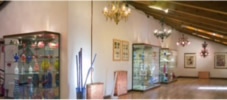
The International Artistic Glass and Spa Museum has been housed inside the Villa Draghi farmhouse, since December 2005, displaying more than 500 works by Giordano Guarnieri, historical master glassmaker from Murano, Umberto del Negro and other master glassmakers from Murano including Venini and the Toso brothers. A section displays precious archaeological findings from the Roman period, which were discovered in Montegrotto Terme.

Butterfly Arc-the butterfly house: thousands of tropical butterflies fly freely around this extraordinary place open to all, scientists, students, butterfly lovers and other visitors; walking through the tropical gardens it is possible to observe the life of these splendid creatures, and watch their evolution from egg to adult butterfly, their splendid colours and infinite forms.
The complex also includes the Fairy Wood and a large insectarium.
Official UNIFORMS
Primary Prevention:
Dermatological diseases
Town of ........
Press releases - 2017
Press review - 2017
Archives European Schools' Gala
E.S.C.O.T. - EUROPE - Video clips
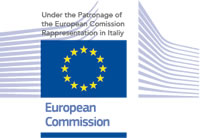
Trailer


